Ok, you've got the cans home, and the grocer gave you a church key along with your cans of beer. Now what? It's not too difficult to learn how to use a church key, but the breweries don't want to risk having a frustrated customer because they couldn't figure out how to use it, or a mad one because they used it wrong and sprayed beer all over themselves. Frustrated, mad customers might buy their beer from another brewer next time. The solution? Tell the customer how to use the new tool. Pamphlets are ok, but easy to misplace or toss out. The easiest, most convenient way to instruct the customer is to put the instructions straight onto the can where they are easy to find.
OI Panels
The part of the can label that showed the opening instructions is sometimes called the "instruction panel" or "OI panel." They took different forms and varied in size, but they all showed the consumer how to open this new container.
When OIs from American Can Company first came out in 1935, they often had a very large picture of a church key on the side. These cans are called "long openers." These didn't last very long probably because the brewers realized that a small picture would work as well.
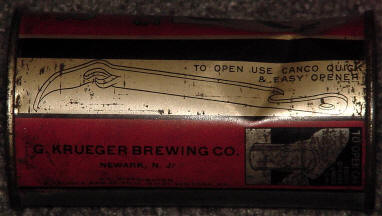 |
| Krueger "long opener." |
As time went on, the church key often took less and less room as people got used to the new kitchen tool. The following instruction panels show a medium-sized or small church key. Note that it's a woman's hands opening the cans. After Prohibition brewers marketed a lot more to women, positioning canned (and bottled) beer as something purchased by the housewife while grocery shopping to consume at home. On a few panels the hand even had nail polish just so you'd KNOW that this was a woman's hand.
 |
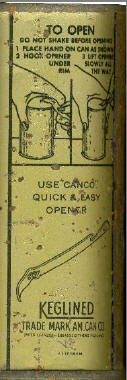 |
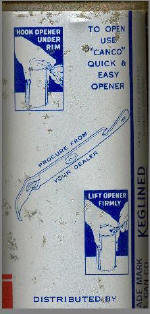 |
A selection of OI panels. |
Some early beer cans showed every step, just so the customer wouldn't miss any. This example is from a Valley Forge Beer from Adam Scheidt Brewing in Norristown, Pennsylvania, circa 1937.
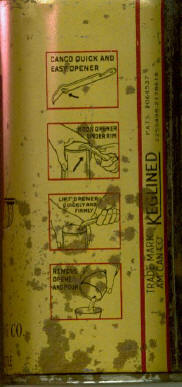 |
Eventually, the opener disappeared entirely and the panel got smaller. It's important to remember that the panel size depended on the can design, and that depended on the brewer. Some cans never had a large OI panel, but included a smaller panel from the beginning. Some of American Can Company's cans had this small panel. The cans made by National Can had two small panels at first, one on each side of the seam. Later, they had one small panel. Here are some examples of smaller instruction panels.
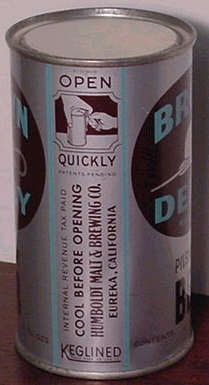 |
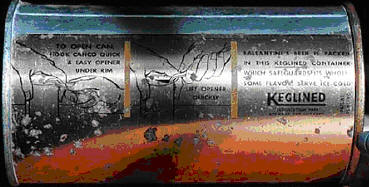 |
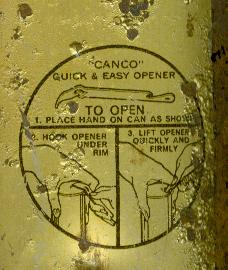 |
| Brown Derby OI Panel. | Ballantine OI Panel. | A small Budweiser OI panel, used from 1936-1948. |
How Long Did OI Panels Last?
That depended on the brewer. Some brewers, such as Ballantine, abandoned them quickly. Ballantine started canning beer in the summer of 1935, and by the summer of 1937 they had abandoned the OI panel. Rheingold Beer (Liebmann Brewing) gave up their OI panel within a year or two as did Christian Feiganspan (PON Beer and Ale). Other breweries kept their OI panels for years. Three in particular were stubborn about giving it up. Sterling (Evansville, Indiana), Falls City (Louisville Kentucky), and Genesee Beer all kept their OI panels past 1950. In these cases it seemed to be a reluctance to totally redesign their labels that was the deciding factor. Falls City and Sterling did change their labels somewhat between the 1930s and 1950, but they were not major design changes. Genesee kept the same basic design for decades. By 1953 or so the last OI panels were gone.
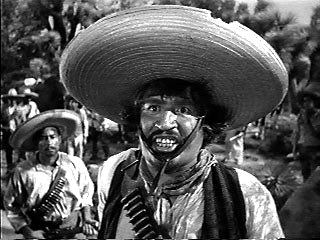 |
"Instructions? We ain't got no Instructions. We don't need no Instructions. I don't have to show you any stinking Instructions!" |
A few early brewers never used the OI panel (although they sometimes used a can lid that had written instructions on it.) Storz (Omaha Nebraska) and Coors (Golden Colorado) started canning beer in 1936 and they never used an OI panel. Interestingly, both used the extra label space on their cans to run long panels extolling the virtues of their product.
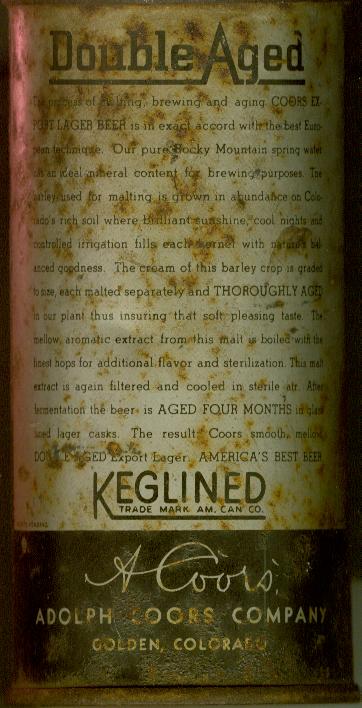 |
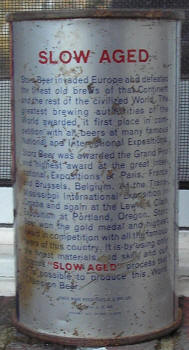 |
Coors (L) and Storz (R) early can backs.
Forget the instructions, let us tell you how great this beer is!
